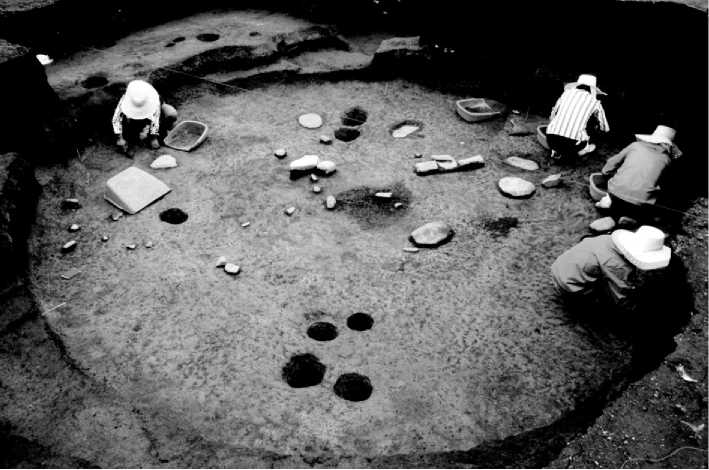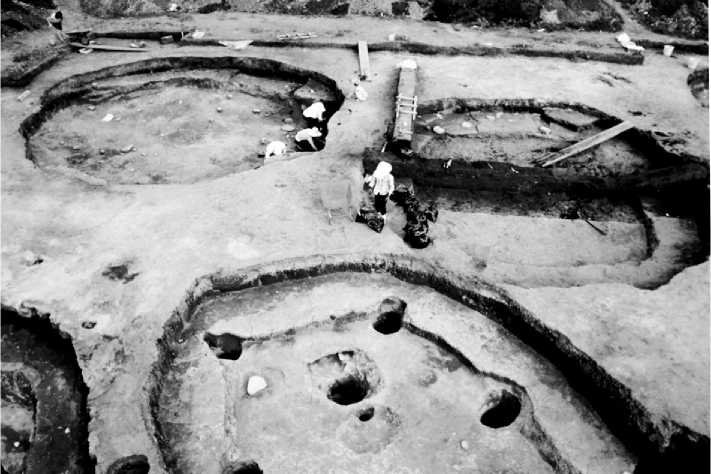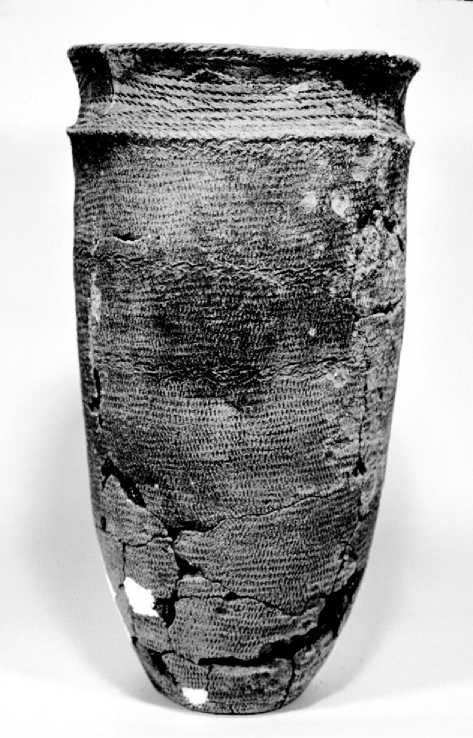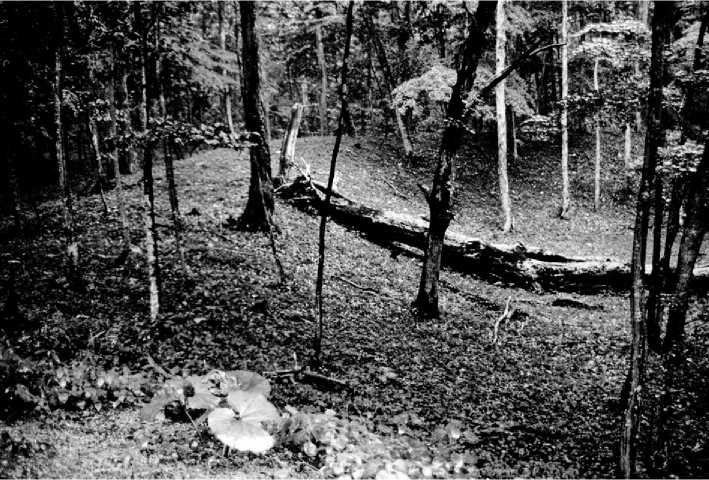The Final Jomon in southwestern Japan ended as a result of immigration and diffusion from the mainland marking the beginning of the Yayoi culture. The Yayoi brought intensive wet rice-, wheat-, barley-, millet-, and soybean-based agriculture, metallurgy, and a new sociopolitical organization from the mainland. Studies on human bone indicate clear differences between the migrant Yayoi and native Jomon populations. Still under debate are new radiocarbon dates of residues on Yayoi pottery are pushing back the

Figure 2 Excavation of an Early Jomon pit house at the Yagi site, Minamikayabe, Hokkaido.

Figure 3 Pit houses at the Early Jomon Hamanasuno site, Minamikayabe, Hokkaido.
Earliest Yayoi pottery to about 1000 BC from 500 BC. This means that the Yayoi began only a few centuries after similar changes in the Korean Peninsula had taken place. Recent research disproves that rice was introduced to Japan from the south through Okinawa and the Ryukyu Islands. Current evidence is for a route from the mainland through Kyushu.
The demise of the Jomon was not synchronous throughout the archipelago. While the Yayoi
Developed quickly in the southwest where Jomon populations were not particularly dense, it continued in the northeast. Final Jomon people made adjustments in the face of developments on their margins and experimented with a southwestern style of agriculture that included wet rice production at locales such as the Tareyanagi site in Aomori prefecture. Rice production was not successful but they continued to grow crops such as barley, wheat, millet, and hemp.

Figure 4 An Early Jomon cylindrical pot (Ento Kaso phase) showing prominent cord-marking.
Ultimately, cultures in the northeast that adopted agriculture became the Tohoku Yayoi, a descendent of the Final Jomon rather than a substitution of it by migrants. The Emishi, a people mentioned in early historic documents in Japan as foreigners in the northeast, likely refers to the Tohoku Yayoi, the nascent Satsumon, and perhaps even the Epi-Jomon cultures. Supporting this view are data demonstrating that the Ainu are physically similar to the Jomon people rather than the Yayoi. The Ainu ancestors are known as the archaeological Satsumon culture. At the northern extremes of Honshu and in Hokkaido, the Jomon lasted until at least AD 500 when the ancestral Satsumon people moved into Hokkaido from northern Tohoku, displaced by political events to the south. The post-Final Jomon cultures in Hokkaido contemporary with the Tohoku Yayoi are the Epi - or Zoku-Jomon. Epi-Jomon life appears to have been relatively simple compared to that of earlier Jomon periods. Most known sites such As the Sapporo Eki Kita-Guchi site (Sapporo Station, North Entrance) consist of cemeteries and short-term occupations (Figure 5). The Fugoppe cave site is an important spiritual space with nearly every rock surface covered in art. A few crops have been recovered from Epi-Jomon sites but they were likely obtained through exchange with the Tohoku Yayoi. Similar population movement might have taken place in the Ryukyu archipelago either at during latter part of the Yayoi-Heian or immediately prior to the Gusuku period. Linguistic and osteological data suggest population movements from mainland Japan. Finally, the

Figure 5 Earthen ridge forming part of a circular enclosure (kanjodori) around a cemetery at the Kiusu site, Hokkaido.
Okhotsk culture occupied the northern coast of Hokkaido, having emigrated from the continent sometime around AD 500. This culture had a maritime adaptation but also grew a few crops as well as raised pigs. They appear to have been absorbed by the Satsumon culture.




 World History
World History









